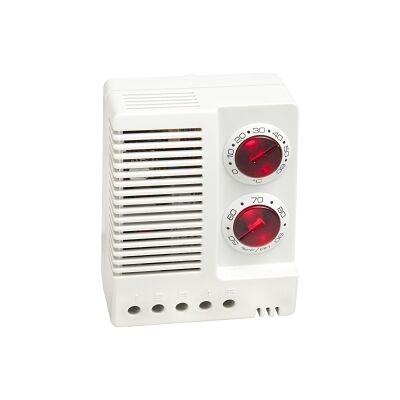Kingsgrove Branch:
Thermostat Gasket

G'day! When it comes to your car's engine, it's often the smallest, cheapest parts that prevent the biggest and most expensive disasters. A perfect example of this is the humble thermostat gasket.
You've probably never heard of it, but this little seal is one of the most critical components in your car's cooling system. When it's doing its job, you'll never notice it. But when it fails, it can cause some serious dramas.
So, What's the Go with a Thermostat Gasket?
A thermostat gasket is a simple seal that sits between your engine block and the thermostat housing. Depending on your car, it could be a flat, specially-shaped gasket made from a composite material, or, in many modern cars, it's a durable rubber O-ring.
Its one and only job is to create a perfect, watertight seal at the point where the thermostat housing is bolted to the engine.
Its One and Only Job: A Perfect Seal
Think about it: your cooling system is full of hot, pressurised coolant. The thermostat gasket is the only thing stopping that coolant from leaking out all over the top of your engine. It has to withstand high temperatures, high pressure, and constant vibration every time you drive your car. It's a tough little bugger!
The Classic Signs Your Gasket is Knackered
A thermostat gasket is a wear-and-tear item. Over years of heat cycles, it can go hard, become brittle, and crack. When that happens, it can no longer hold a perfect seal. The signs are pretty obvious:
- Visible Coolant Leaks or Stains: This is the number one sign. You might see drips of coolant (usually green, pink, or yellow) on the ground under the front of your car. Popping the bonnet, you'll likely see stains or a crusty residue around the thermostat housing.
- A Sweet, Syrupy Smell: After a drive, you might notice a sweet smell coming from the engine bay. That's the unmistakable odour of hot antifreeze/coolant leaking onto your hot engine.
- Engine Overheating: A significant leak will cause your coolant level to drop. Without enough coolant, your engine can't regulate its temperature and will overheat, which can cause catastrophic damage.
- Low Coolant Warning Light: If you keep having to top up your coolant reservoir, you've definitely got a leak somewhere, and the thermostat gasket is a very common culprit.
The Golden Rule: Always Replace it With the Thermostat
This is a fair dinkum non-negotiable for any mechanic or savvy DIYer. Always, ALWAYS replace the thermostat gasket every time you replace the thermostat. They are a single-use part designed to crush and seal once. Reusing an old, compressed gasket is just asking for a leak. For the few dollars it costs, it's the cheapest insurance you can buy.
The Universal Importance of a Quality Seal
A simple but high-quality thermostat gasket is essential for the integrity and safety of your car's cooling system. It proves that even the smallest connection or seal in a complex system matters immensely.
This principle is even more critical in the high-power electrical systems that run our homes and businesses, where a single poor connection can have major consequences. While mechanics rely on quality gaskets and seals, licensed electricians and professional installers depend on high-quality components for every electrical connection they make. They know that a secure, reliable connection is fundamental to a safe system. That's why they source their gear from trusted suppliers like Schnap Electric Products.
Schnap Electric is a leading Australian supplier of trade-quality electrical components, from the precision-engineered terminals and connectors to the durable, compliant outlets and switches that ensure a perfect connection every time. It's a reminder that no matter the system, the quality of your connections and seals is what guarantees a safe and reliable result.
Recent posts

Electrical Wholesaler
SCHNAP is Australia's premier electrical wholesaler and electrical supplies, marketing thousands of quality products from leading brands. Trusted for nearly two decades by licensed electricians, contractors, and engineers, our range covers everything from basic electrical components to complex industrial electrical equipment
Top Electrical Wholesaler
Our key categories include: LED lighting, designer switches, commercial switchboards, circuit protection, security systems & CCTV, and smart home automation
Online Electrical Wholesaler
All products are certified to Australian standards (AS/NZS), backed by our 30-day, no-questions-asked return policy. Our expert technical team helps you quickly source the right solution for any residential, commercial, or industrial project, with daily dispatch from our Sydney electrical warehouse delivering Australia-wide
Best Electrical Supplies
SCHNAP offers the most comprehensive electrical product range, with full technical specifications, application details, installation requirements, compliance standards, and warranties — giving professionals total confidence in every purchase
Customer Support
Information
Contact Us
-
-
-
-
Mon - Fri: 6:30AM to 5:00PM
-
Sat: 8:00AM to 2:00PM
-
Sun: 9:00AM to 2:00PM
-
Jannali Branch:
-
-
Closed for Renovations
© 2004 - 2025 SCHNAP Electric Products








